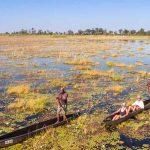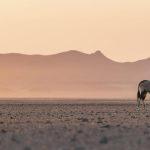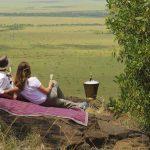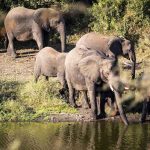It is one of Tanzania’s oldest National Parks and is the flagship of Tanzania’s tourist industry.
The name `Serengeti’ is derived from the Maasai word Siringitu, which means: ‘The place where land moves forever’, and this aptly describes the sea of endless grasslands and rolling, grassy hills.
The Serengeti itself is a substantial national park covering an area of approximately 15,000 km². But if one includes the total area covered by the migration, this figure can be doubled in size! When imagining the Serengeti most people visualise vast, endless plains covered in migrating Wildebeest and Zebra. Although there is lots of grassland in the Serengeti (particularly in the southern regions), the vast area that makes up the Serengeti region, offers a wide range of landscapes and ecosystems. The endless grassy plains give way to areas of iconic acacia forests, to lush riverine vegetation, desiccated soda lakes and ageless granite outcrops. It is the undisputed highlight of the wonderful Northern Tanzania safari area and surely the greatest wildlife reserve in East Africa.
Undoubtedly the highlight of any visit to the Serengeti, is viewing the famous Wildebeest migration.
The migration spends almost 10 months of the year in Tanzania, with over 2 million Wildebeest and Zebra roaming through an area larger than Leinster province. However, the plains are so vast that it is still possible to miss the migration, if you travel at the wrong time or to the wrong area. But, if you travel to the Serengeti and miss the migration, then you have travelled with the wrong people!
The annual migration follows a yearly cycle that guides the animals on a 1,200 km journey through Tanzania and Kenya. The below map outlines the path the migration takes and also the approximate months in which the migration passes through these areas.
Particular highlights of the migration include the various crossings of the Grumeti and Mara rivers. These rivers teem with massive crocodiles awaiting their annual feed. So all viewpoints overlooking the various, seasonal crossing points are at a premium.
Other highlights include the many predators that prey on the great herds. Of particular interest are the large prides of Lions and a significant population of Cheetahs. But there is also a large number of Leopards, Hyaenas and Painted Dogs in the park.
There are areas of the Serengeti that are not only about the migration, but also have great game-viewing year round. We travelled to the far north in November, 6 weeks after the migration had passed through and on into Kenya. We saw more in one drive through the Lamai Triangle, than we have seen on any other single drive, anywhere!
Contact us
In order to see the Serengeti for yourself, contact the experts at Tanzania Odyssey via the link or give us a call in the UK on +44 (0) 20 8704 1216 or toll free in the US on +1 866 356 4691.





